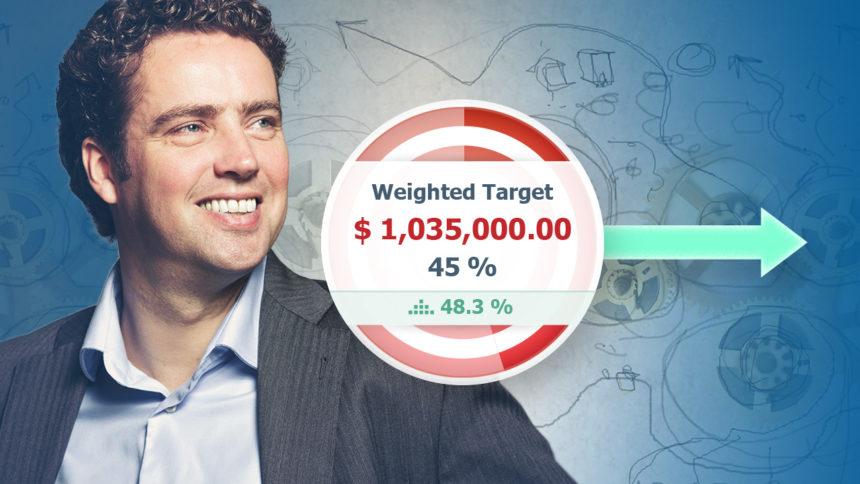Condensed from a Pipeliner SalesChats Interview with Dan McDade
Interview by John Golden
Dan McDade is certainly qualified to talk about leads. He founded PointClear in 1997, and for over 20 years he’s been instrumental in developing strategies that assure that 100% of the leads delivered to his company’s client sales organizations are fully qualified to client specification. Dan is also the author of The Truth About Leads, a book about how to focus lead generation efforts, as well as From Chaos to Kickass, a white paper detailing the benefits of Sales and Marketing optimization, available from PointClear’s web site.
Q: Why is prospecting so hated by many people, and how could they look at it differently?
A: One of things that companies have to recognize is that not every sales rep was created equally. Some are great hunters, and great hunters hate to beat the bushes looking for new business. Some are farmers, good at farming business out of the current clients, not so much looking for new business with new clients.
The difference in mentality between someone beating the bushes looking for business and a hunter is so dramatic that anybody who would be any good at one would be absolutely wretched at the other. So our view is you try to get more highly qualified leads into the hands of the field sales reps, and let them go do what they do best which is closing business.
Q: When is the best time to really start engaging with the prospect in their buying process, and how should you do that?
A: That’s my number one pet peeve.
Going back to 2013, SiriusDecisions reported that 70% of the buying process in a complex sale is already completed before a prospect is willing to engage with a live salesperson. Forrester said that 2/3 to 90% of the buying cycle is completed before a B2B buyer even speaks to a sales rep. IDG stated that business buyers spend just 21% of the buying cycle in conversations with salespeople, while spending 23% of their time in conversations with peers, and 56% of their time in the buying cycle searching and engaging with content before they have a sales rep get involved.
Contrast that with current thinking, such as that of my friend Mike Weinberg who recently wrote in one of his blogs, “What’s infuriating, aside from the fact that it’s absolutely not true, is that this nonsense is exactly what the reactive and passive sales reps want to hear. They want to hear that it’s fruitless to go out and cold call, because they don’t like to do it, they don’t want to do it, and they’re just going to sit back and wait for the prospects to come to them.”
When SiriusDecisions reversed their stance, Mike wrote in his blog, “Today I’m celebrating as SiriusDecisions publicly and authoritatively debunks that silly myth, oft-quoted statistic, at their annual sales SiriusDecisions Summit. It turns out, according to their own exhaustive research, that buyers are in fact engaging with sellers from the very beginning education stage, through the selection of the solution. In fact the highest level of reported buyer-seller interaction actually occurs early on in the education phase.”
What I always tell salespeople is that if you wait for 60, 70, 80% of the buying process to be complete before you get involved, the chances are that you’re going to be column fodder in an evaluation that’s already been won by one of your competitors because they were more nimble and got involved earlier.
Q: What are some of the skills that make a good prospector?
A: 2 words that we use frequently are “professional” but “persistent.” In looking through a sales process, you’ll find that there are salespeople who give up for what SiriusDecisions refers to as “unintuitive reasons.” One example of that is you send a lead to a sales rep, the sales rep calls twice, the prospect doesn’t call back, and the sales rep just ignores the lead and says, “It must not have been qualified.”
My favorite story about this is on the 42nd touch, the CFO of the 3rd-largest utility in the country called us back and said, “Don’t stop calling me. You’re my conscience. I’ve been wanting to talk to you, I’ve just been extremely busy.” About 5 months later, that lead closed for a billion-dollar deal.
So be persistent and don’t be defeated by being ignored, at least early in the stages.
Q: What are some of the best ways of being professionally persistent?
A: I find that the very best reps are driven by the 5 steps of the basic sales process. These steps are generic, but they really apply to every sales methodology out there. They are:
- Find the pain.
- Get agreement that there is pain.
- Get agreement to do something about the pain.
- Agree to a generic solution.
- Agree to a customized, specific solution.
The problem with sales right now is that a sales rep finds a pain and goes right to a specific solution, as opposed to going through all of the other steps. If you find the pain, and the prospect even agrees that they have pain, but they never agree to do something about the pain, then you’re going to step 5 and they’re back there stuck at step 3, and you haven’t gotten them over the humps to actually agree to do something about the pain. You’re not going to sell in that environment.
Q: When you come to train or advise people on prospecting, how would you train somebody to be a top-class prospector?
A: One of the things that I think is the toughest part of any sale is giving the call, so to speak, or giving the meeting, back to the prospect. In any sales call there is an opening, a dialog and a close. 20 years ago we identified a gap between the opening and the dialog that’s critically important to fill. That’s where you give the call or the meeting back to the prospect.
Here’s an example of such a transition statement: “When I meet with other CIOs in manufacturing companies, I hear the same issues over and over again. The first is, there’s a concern about lack of integration between their current technology and the modern tools out there today such as business intelligence. Two, they have a fear of both the real cost and the opportunity cost of replacing the current solution, and because it’s just such a huge mountain to climb. And three, many have doubts about the effectiveness of updating the current solution or the current technology. And I just wanted to ask, are any of these concerns of yours?”
If you ask the right questions, they’re going to say, “They’re all concerns of mine.” One of the things we tell our folks is, the best call that you can possibly have is when you use the transition statement, you ask one question, and they answer every other question you have.
Q: We’ve talked about the things to do, now let’s talk about some of the common mistakes. When you go and work with an organization, what are some of the common prospecting mistakes that you see happening and that you see prevalent today?
A: Probably the single biggest is the gap between Marketing and Sales when it comes to lead follow-up.
First of all, Sales and Marketing have to be on the same page as to what the definition of a qualified lead is. Right now I’d say 99 out of 100 companies don’t share a common definition of lead between Marketing and Sales. As a result, Marketing is generating leads that Sales doesn’t value.
Nurturing can triple the return on any marketing investment. So if you end up with a situation where the lead goes to Sales and gets rejected, instead of it ending up in a black hole, it needs to get back to Marketing so it can be nurtured along to the next step. We have a high degree of success with nurturing leads for our clients, leads that for whatever reason weren’t Sales-ready. We get those leads to Sales when it’s the right time for them.
To contact Dan McCade:
WEBSITE: https://www.pointclear.com
EMAIL: dan.mcdade@pointclear.com
TWITTER: https://twitter.com/dandade








